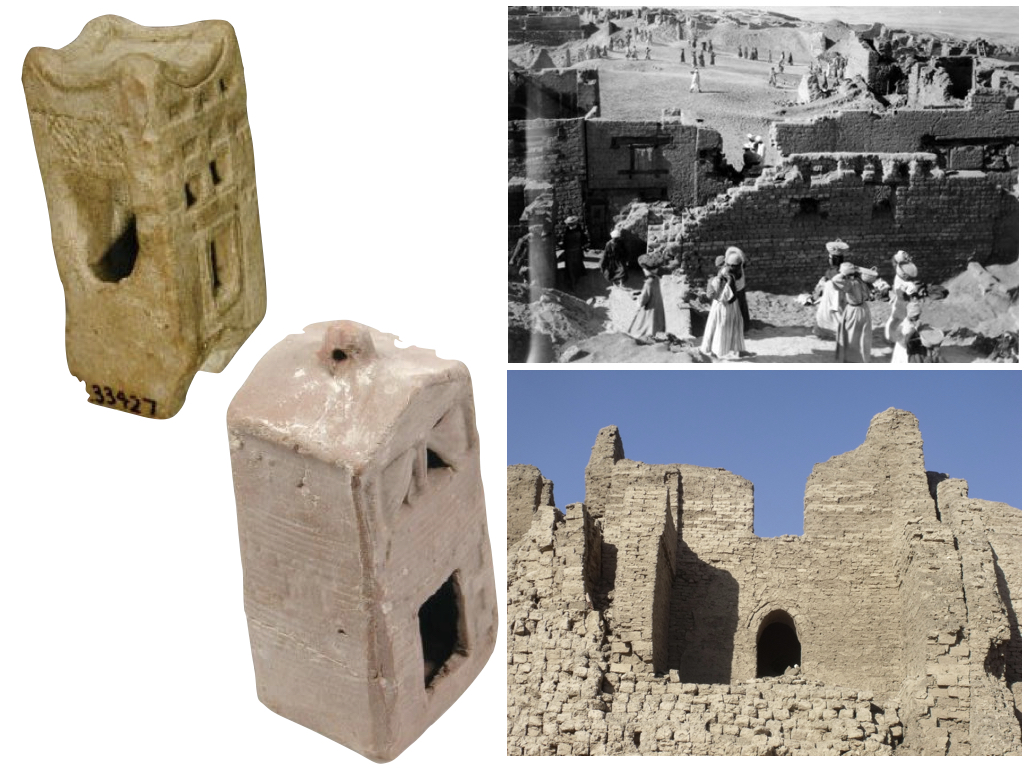Jennifer Cromwell
There are several constants in life. Taxes, prostitution, death, and renting. Whether moving to a new city or new country, you need a place to live and for many this means navigating the vagaries of letting agents, landlords, and contracts. Having just moved to a new city – in my third country in seven years – the problems of finding a place to live quickly and going through the process is fresh in my mind. But this is by no means a modern problem.
On 14the June (Paone 20) of a fourteenth indiction year* in the eighth century, the master builder Zacharias signed a contract to rent several rooms in the house of Phoibammon in Hermopolis (Coptic Shmoun, modern el-Ashmunein). The contract survives in two main fragments, one in the Hermitage Museum in St Petersburg and the other in the British Library in London, although it is not complete and holes in the two pieces have caused some loss of information (including the total duration of the rental agreement). However, the key details are remain.
Zacharias rents three rooms and has access to common areas, including the entrance room and the stairs. These rooms include a veranda – a room that would have been open or columned on one side – on the second storey and a bedroom on the third storey of the building. His annual rent, paid in one lump sum at the end of the rental year, is one gold tremis, which equates to one-third of the principal gold coin of the time (Greek nomisma, Coptic holokottinos, often referred to by the Latin term solidus).
“[…] your share of the house in the street [of the Archangel …] i.e., one veranda on the second storey; [… and the] roof over it; the bedroom on the third [storey …]; the share in the entrance room and the hut [… the entrance and exit]; the ascent and descent, [in general] every legality belonging to this share in the houses in this city Shmoun. I will live [with you and pay] you its rent: one gold tremis, being seven carats and a quarter, [i.e.,] 71/4 gold carats. This rent, then, I will pay you at the end of my year, annually.”
The contract also includes a clause making provisions for what should happen should either party terminate the contract early. If the tenant, Zacharias, vacates the property before the end of the year, he will pay the entire annual rent. However, if the landlord, Phoibammon, evicts him before this time, Zacharias only has to pay the rent up to that time.
“[If, then,] at the end of my year, you want me to vacate my share of the house, then I will release it to you, [completely, with] its door with the iron keyhole to the veranda’s door, just as I received it. If I vacate, before the end of my year, I will pay the complete rent. If you evict me from [this share of the house] before its end, then I shall pay the rent for what I have used.”
The contract ends with the signatures of Zacharias and two witnesses, a priest Collouthos son of Theodorake and Hllo son of Apa Theodorake (perhaps brothers), and the scribal statement of the notary Mone.
From the Roman period, houses in Egypt were typically built on a small plot and had several storeys (often three or more). How impressive or standard Phoibammon’s townhouse was is impossible to determine based on this contract. Furthermore, little survives of the city in the archaeological record – as a result of the long and continuous occupation history at the site – and it is difficult to reconstruct the domestic spaces of Hermopolis. The remains of houses in other, smaller towns and villages, give an idea of what the house may have looked like, for example the houses excavated at Karanis in the Fayum or Djeme in western Thebes (parts of the latter can still be seen today on top of the mudbrick enclosure wall of Medinet Habu). Terracotta models from Roman Egypt also provide a glimpse of these tall, thin Roman house-types that Zacharias would have lived in.

*Indiction years refer to a fifteen-year tax cycle, introduced during the reign of the emperor Diocletian. Without any further information (or a fixed reference point), it is not possible to ascribe an absolute date to an indiction year.
Technical Details
Provenance: Hermopolis (al-Ashmunein), Egypt
Date: 8th century CE
Language: Coptic (Sahidic)
Collection: Hermitage Museum, St Petersburg (no inventory number) and British Library (Or. 5993)
Designation: P.Hermitage Copt. 1 + P.Lond.Copt. I 1017 = SB Kopt. III 1401 (for papyrological sigla, see the Checklist of Editions)
Bibliography: T. Sebastian Richter (2002) “Koptische Mietverträge über Gebäude und Teile von Gebäuden,” Journal of Juristic Papyrology 32: 113–168 (pp. 127–130).
Further reading on houses in Roman and late antique Egypt:
Richard Alston (2001) The City in Roman and Byzantine Egypt. London.
Anna Boozer (2015) “Inside and Out: Romano-Egyptian Housing from the Fayyam and Dakhleh,” in Housing and Habitat in the Ancient Mediterranean: Cultural and Environmental Responses, edited by Bruce E. Parr, Angelo A. Di Castro, and Colin A. Hope. Leuven.
Geneviève Husson (1983) Oikia. Le vocabulaire de la maison privée en Egypte d’après les papyrus grecs. Paris.